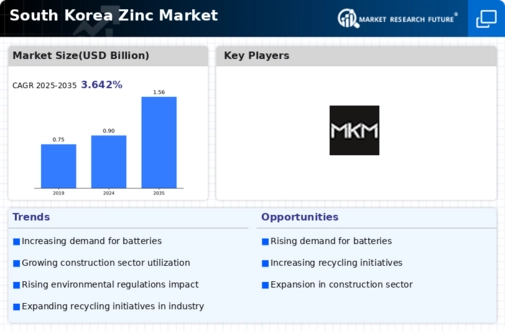The South Korea Zinc Market is characterized by a dynamic landscape influenced by various factors, including industrial demands, technological advancements, and the regulatory environment. As a significant player in the global zinc market, South Korea boasts a robust infrastructure for the production and distribution of zinc products. The competitive insights reflect a mix of established companies and emerging players that contribute to the market's growth and innovation.
Understanding the competitive dynamics in South Korea involves analyzing the strategic moves of major players, their market share, product innovations, and the overall health of the supply chain in response to fluctuating demand and pricing trends. MKM Metal stands out in the South Korea Zinc Market due to its comprehensive approach to production and distribution within the region. The company has developed a strong reputation for its high-quality zinc products, catering to various industries such as construction, electronics, and automotive. MKM Metal has successfully leveraged advanced technologies in its manufacturing processes, which enhances product efficiency and sustainability.
Additionally, the company's strategic partnerships and well-established distribution networks have allowed it to maintain a competitive edge, providing it with the capability to respond quickly to market demands and changing customer preferences. The combination of innovative practices and a focus on quality has positioned MKM Metal as a key player in the zinc market in South Korea. Seoul Zinc is another prominent entity in the South Korea Zinc Market, recognized for its diverse range of zinc-related products and services.
The company specializes in the production of zinc ingots, zinc alloys, and various zinc chemicals, meeting the needs of several industrial sectors. Seoul Zinc's strong market presence is bolstered by its commitment to research and development, enabling it to introduce innovative products that cater to modern applications. The company has also pursued strategic mergers and acquisitions, enhancing its operational capabilities and expanding its market reach. Strengths include its established reputation, extensive distribution channels, and a dedicated focus on sustainability, which aligns with increasing environmental regulations and consumer preferences.
Through these strategies, Seoul Zinc has solidified its position as a key competitor in the South Korea Zinc Market.












Leave a Comment